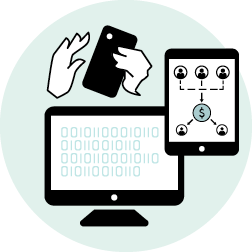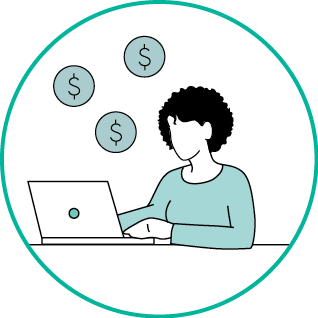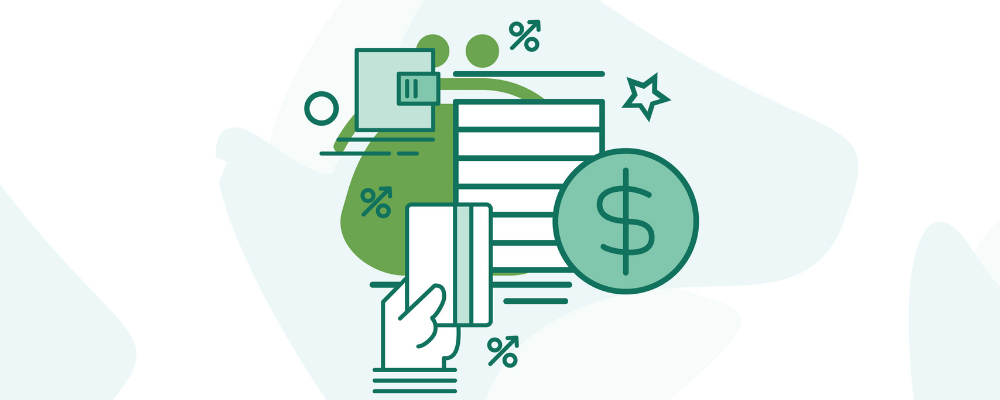Tired of late payments? You're not alone.
Nearly half of all invoices issued by small businesses are not paid on time. While one late payment can seem like a minor inconvenience, it can quickly turn into a pattern that can have an impact on your business's productivity, customer relationships, and ability to pay suppliers and staff.
Add up these challenges created by late payments and it’s easy to see their impact on cash flow. Maintaining a good balance between money coming in and money going out is key to having enough cash reserves to ensure the daily operations of your business.
But when businesses are busy chasing payments, significant time is wasted on tracking the status of receivables and following up, pulling resources away from critical functions that drive revenue and positive customer service. Approximately 50,000 businesses per year fail as a result of cash flow issues associated with late payments.
The Root Cause of Late Payments? Inefficient Manual Processes
There are multiple reasons why customers may pay late, such as deliberately avoiding payment, forgetting to pay, not understanding the terms of the invoice, or even sending it to the wrong person. Then there are factors associated with the time it takes to compile and distribute the invoice, followed by the time it takes for the payor to prepare and submit the payment. For some of these factors, there is nothing a seller can do to control the situation, but for some, the cause for delay can be addressed by trading in paper invoices for electronic.
Of the millions of invoices exchanged yearly between sellers and buyers, 70% of them are paper-based. Because the process of sending paper-based invoices is heavily manual, it creates several inefficiencies for both parties in a transaction.
For sellers, the act of manually creating the invoice and sending it out via mail already puts them at a disadvantage. That's because of mail float, or the days it takes the invoice to travel from the seller to the buyer, which naturally extends the Days Sales Outstanding (DSO) performance. Once the customer receives the invoice, their Accounts Payable process dictates the timing, which is often full of its own set of challenges that might delay payment.
The price of paper invoices is steep. Companies spend an average of $170,000 per year on paper invoices and about 135 labor hours per week to issue and process them. It's easy to see how the financial pressure gets compounded with each late payment.
Electronic Invoices: An Antidote for Late Payments
Many businesses are realizing the substantial cash flow impact electronic invoices can have on both sides of the cash flow equation – bringing money in faster and spending less to get paid. While it might be a stretch to say electronic invoices can completely eliminate the problem of late payments, adopting electronic invoicing and automation can help you improve the time from a buying transaction to receipt of payments. But first, what is an electronic invoice?
An electronic invoice is a form of billing where the entire process for generating and delivering, the invoice happens digitally. The sender creates the invoice in an electronic and delivers it via email or text. In addition, most e-invoices contain a payment link, which makes it easy and convenient for the payor to click to pay as soon as they receive the invoice.
When the automation features of the electronic invoices are used, such as automated payment reminders and late payment notifications, it not only helps you get invoices out faster and receive payment faster, but also saves money by forgoing printing, postage and labor costs of initial and reminder invoices and follow up calls by your collections team. It’s easy to see how the savings can add up quickly, and provide access to your funds sooner.
8 Ways Electronic Invoices Help You Get Paid Faster
Email and Text Invoices
The average American spends five to six hours on their phone daily. If you want to make sure your customer receives the invoice, send it to their phone! Many electronic invoice solutions offer the option of sending invoices via email or text messaging where the recipient is most likely to see it. Making it easy for the recipient to see it is a crucial step to getting paid faster.
Automatic Reminders and Late Payment Notifications
Life happens. Sometimes people forget to pay their invoices on time. In fact, it's one of the reasons late payments happen, and it is usually not deliberate. With an electronic invoicing solution, you can help your customers stay tuned in to the due date with automatic reminders and late payment notifications, that don’t require any ongoing effort from you. Simply set up the frequency of payment due and late payment reminders for your accounts and you never have to think about it again.
Text-to-Pay
With text-to-pay, customers can quickly and easily authorize payment through a simple reply to a text on their phones. Today’s customers are on the go and enabling them to opt-in for this service means they can pay when they want, how they want, and wherever they want.
Payment Links
The key to realizing the true benefit of e-invoices — getting paid faster — is payment links. Through the embedded link or button on the invoice, customers are taken to a secure checkout page to input their payment details. Providing that very convenient option to submit their payment any time day or night with no extra effort, is a simple and most effective tactic to reducing DSO and improving your cash flow.
More Payment Acceptance
The demand for convenience and flexibility also translates into the types of payment methods accepted by businesses. Utilizing a payment page that supports the widest range of credit and debit cards is essential – you got them to click the link to pay, make sure they are not hindered by learning that their preferred option is not accepted. Most businesses accept Visa and Mastercard, but you’ll increase your chance of getting paid on their first visit if you also promote acceptance of American Express, Discover, and UnionPay. Including the option for payment by ACH will further increase the likelihood of the customer paying the first time, especially for those business customers just getting comfortable with moving away from paying by check.
Automatic Payments
Enabling customers to set up automatic invoice payments will not only help you get paid faster but can also help you build stickier, long-term customer relationships. Not only are customers relieved of the stress of keeping up with due dates, but they are not rethinking the expense every time the monthly bill comes due. They simply set it and forget it, while you have a reliable revenue stream, and know exactly what day that payment will come in.
Storing Payment Information
Loyal customers are the bread and butter of thriving businesses, and there's nothing more annoying for a customer than having to rekey the same information each time they buy — especially if they're a frequent buyer. Enabling customers to store their payment information removes a barrier to paying immediately, any time they click to pay, without having to have payment details on hand. Likewise, it aligns with the consumer experience many business customers have now come to enjoy and expect.
Dashboard Metrics
The more data you have about the status of your invoice receivables, the more empowered you are to make decisions to improve your cash status. An effective electronic invoicing solution should contain a dashboard designed to help you reduce DSO — such as metrics that tell you your average DSO, the number of incomplete invoice drafts, and open and past due invoices. Use the dashboard to identify trends and gaps that can help you take steps to improve cash flow management.
Now's the Time for Electronic Invoices
Combatting the issue of late payments starts with addressing one of the key contributors to slowing receipt of payments: the inherent manual process in running paper invoices. Making the switch to electronic invoices will help lower your DSO, reduce operating costs, build better vendor and customer relationships, and provide you with a better growth path. And with the global electronic invoicing market expected to hit $752 million by 2027, it's only a matter of time before electronic invoices become the norm.
Want a closer look at how electronic invoices and automation can help you get paid faster? Watch our 10-minute demo to learn how you can gain a competitive edge.



